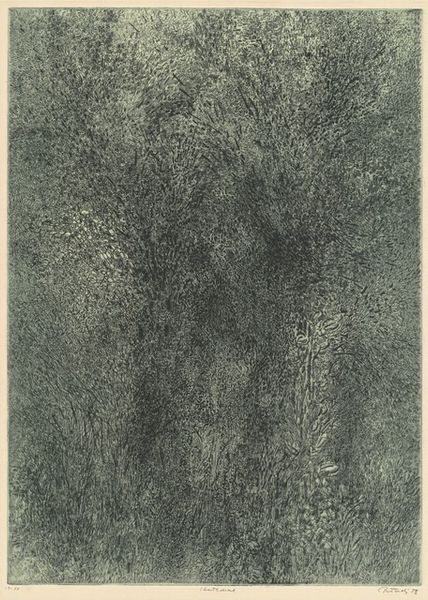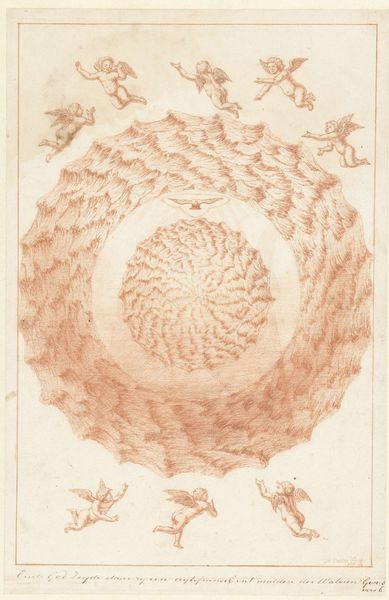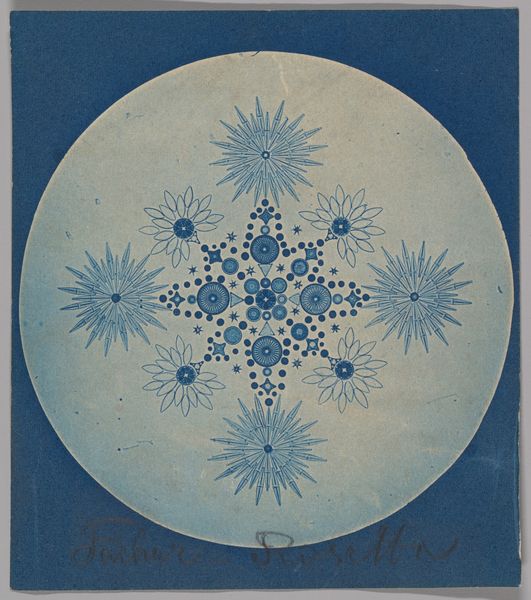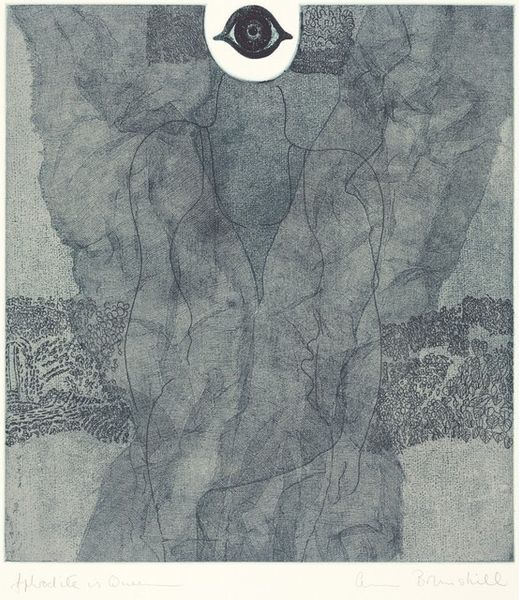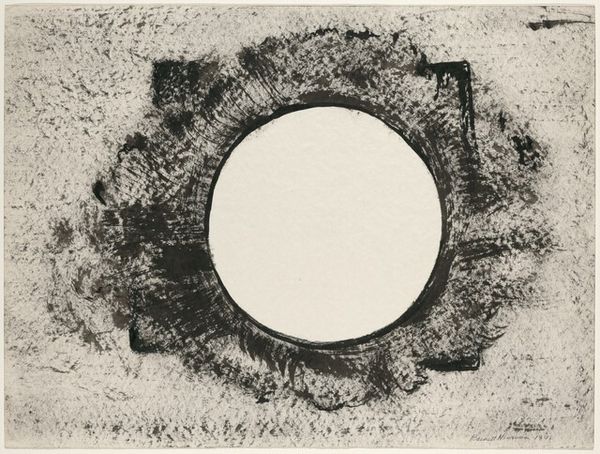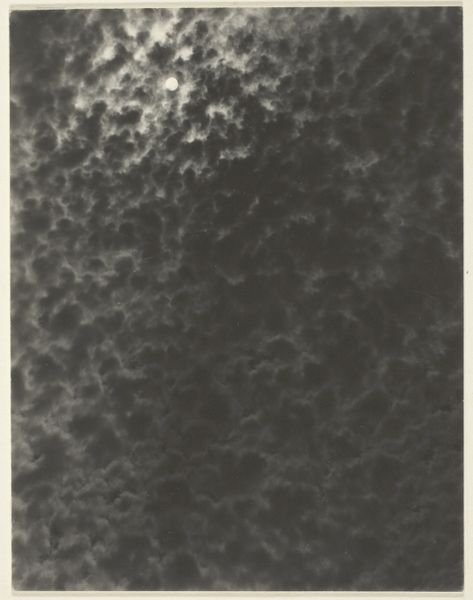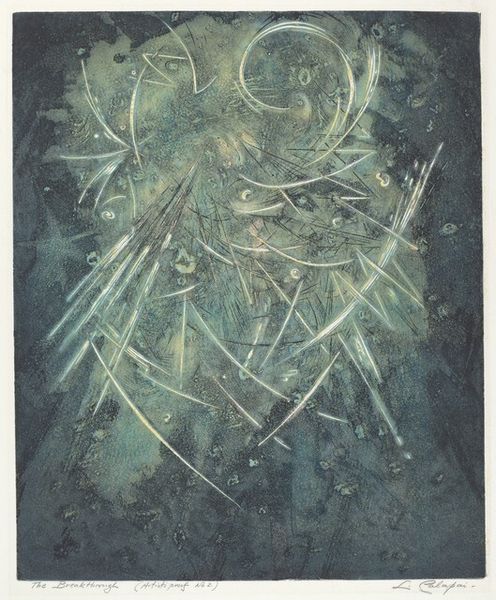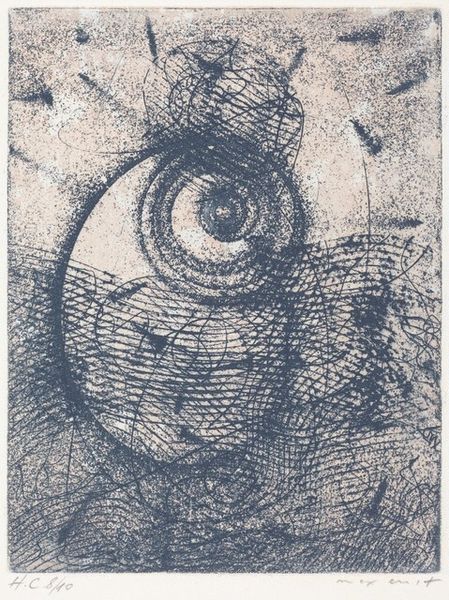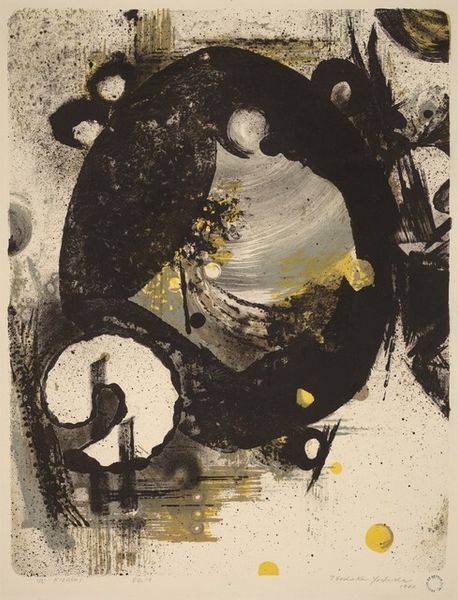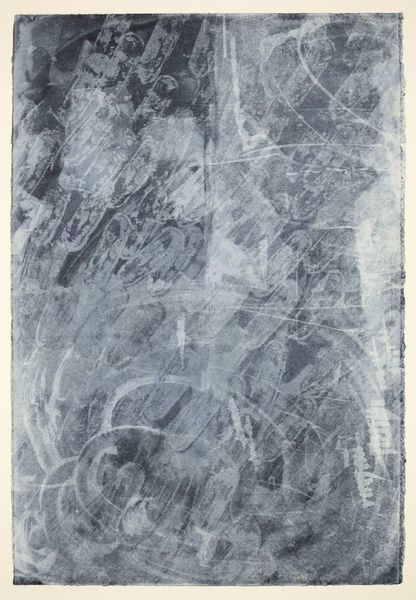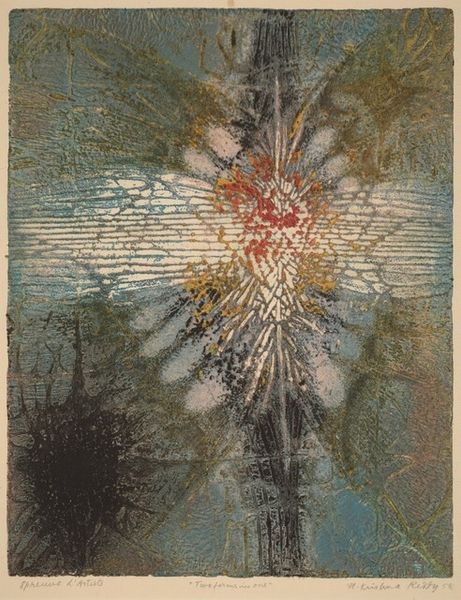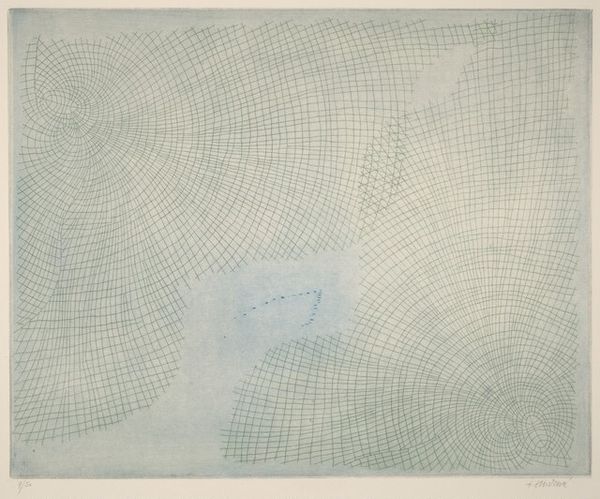
#
rippled sketch texture
#
naturalistic pattern
#
natural shape and form
#
organic
#
natural formation
# print
#
nature colouring
#
organic pattern
#
geometric
#
watercolour bleed
#
pattern in nature
#
organic texture
#
botanical art
Dimensions: plate: 34.7 x 31.7 cm (13 11/16 x 12 1/2 in.) sheet: 56.5 x 39.5 cm (22 1/4 x 15 9/16 in.)
Copyright: National Gallery of Art: CC0 1.0
Curator: We're looking at Ann Brunskill's print, possibly from 1970, entitled "Aphrodite is the World." Editor: It's immediately striking—there's a beautiful, almost ethereal quality to the composition. A central, radiating sun-like form dominates this field of textured impressions that remind me of plant growth. Curator: Yes, the composition revolves around this central geometric figure that juxtaposes starkly with the organic, free-flowing nature of the background. It's fascinating how Brunskill balances these elements. Semiotically, we can view the radiant sun-shape as the signifier of Aphrodite's world and can understand this in terms of a closed symbolic system, a code for a kind of earthly sensuality. Editor: I read this radiance slightly differently; its title suggests a grand assertion. It calls into question the role of Aphrodite and how society traditionally understands beauty and power. Brunskill, in her practice, frequently engages in discussions of how gender roles and expectations are rooted in our construction of social hierarchies, and so my impulse is to interpret this sun as a political assertion rather than solely symbolic. Curator: The textures and forms here seem rooted in natural patterns, like botanical art—you might even suggest patterns within water, yet distilled through the formal language of printmaking. There is a repetition of shapes that guides the eye, encouraging a dance through the various tones and densities. Editor: Definitely. The work feels deeply rooted in ideas of fertility and cycles of growth, particularly when we begin to understand this work as being part of the second wave feminism art discourse that demanded greater recognition of female contributions, be they through material or reproductive labour. There is the natural in tandem with the cultural; how the "world" has always demanded different kinds of outputs, even when it did not recognise them. Curator: Agreed. Thinking about the formal arrangement of shapes, it feels that everything circles back to that central emblem. What might be a mere play with composition suddenly has depth because of the artwork’s name, creating a unified whole of idea and arrangement. Editor: Exactly, it reminds us how historical narratives around female contribution and recognition form a constant ebb and flow; it makes Brunskill's print powerfully relevant today. Curator: I'm particularly struck by how Brunskill creates movement and form out of seemingly random marks, allowing light and shadow to emerge as integral components of the visual structure. Editor: Yes, and seeing how she uses a mythological subject can open conversations that deconstruct not just art, but history.
Comments
No comments
Be the first to comment and join the conversation on the ultimate creative platform.
